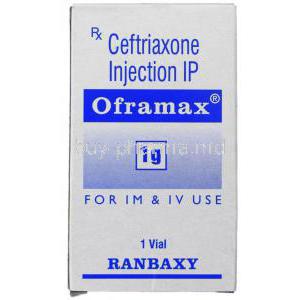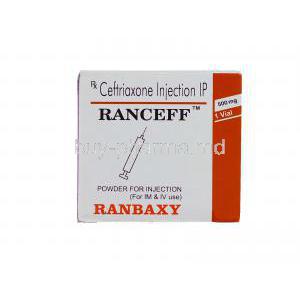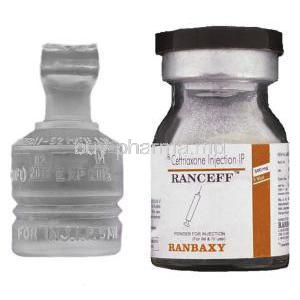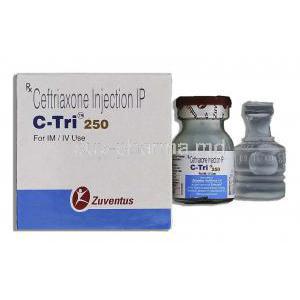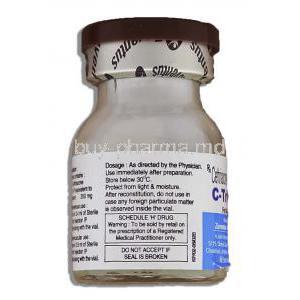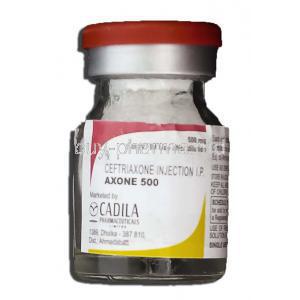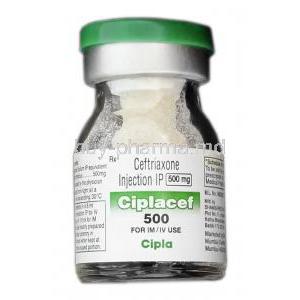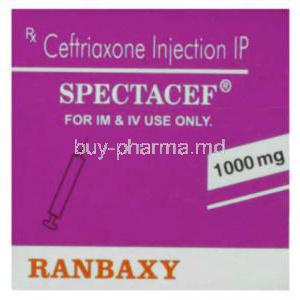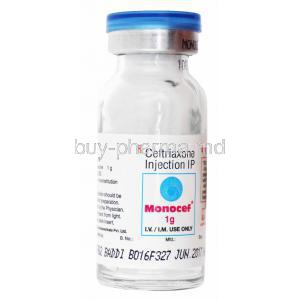Ceftriaxone Sodium
- I. Introduction
- II. The Mechanism of Ceftriaxone
- III. Primary Uses of Ceftriaxone Injection
- IV. Off-label Uses of Ceftriaxone
- V. Dosage and Administration of Ceftriaxone Injection
- VI. Special Precautions in Ceftriaxone Administration
- VII. Ceftriaxone and Drug Interactions
- VIII. Possible Side Effects of Ceftriaxone Injection
- IX. Overdosage and Its Management
- X. Contraindications for Ceftriaxone
- XI. Storage and Handling Precactions
- XII. Closing Remarks: Importance of Informed Ceftriaxone Use
I. Introduction
A. Brief Overview of Ceftriaxone
Ceftriaxone, a formidable antibiotic of the third-generation cephalosporin class is highly regarded in the medical field for its proficiency in combatting a wide range of bacterial infections(1). Its synthesis was specifically designed to overcome both Gram-negative and Gram-positive bacteria. Showcasing its impressive resilience against beta-lactamase enzymes that are commonly found in antibiotic-resistant strains.
1. Ceftriaxone: Uses, Side Effects, Dosages, Precautions
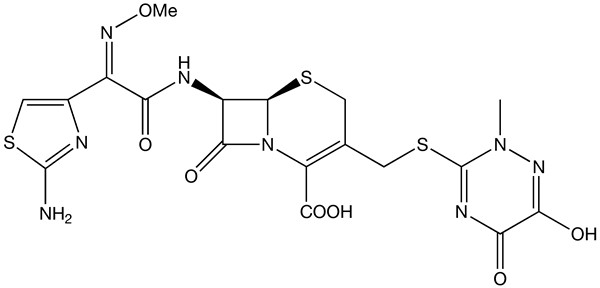
Ceftriaxone
B. Context and Importance in Medical Treatments
Within the realm of healthcare practices. Ceftriaxone holds a significant position due to its versatility. Consequently, it is relied upon extensively across clinical settings. This drug serves as a fundamental component for managing diverse conditions, such as
- Meningitis - When tackling meningitis - where immediate and effective intervention is critical, Ceftriaxone consistently demonstrates its effectiveness (1)
- Gonorrhea - Similarly, in combating sexually transmitted infections like gonorrhea Ceftriaxone is considered a trustworthy ally
- Lyme disease -Furthermore. The therapeutic breadth of this drug becomes evident in its role in managing Lyme disease.
As it boasts potent efficacy, broad-spectrum activity, and the added convenience of once-daily dosing, it has been deemed an invaluable asset in community and hospital environments.
1. Treatment of bacterial meningitis with once daily ceftriaxone therapy
C. General Composition and Properties
Ceftriaxone, a cephalosporin, possesses the essential beta-lactam ring structure characteristic of this group of antibiotics. This structural feature plays a vital role in their antimicrobial activity. With its molecular formula, C18H18N8O7S3•3.5H2O Ceftriaxone is quite a large and intricate molecule. Notably. It exhibits remarkable stability and has a long half-life, which allows for the convenience of administering just one dose per day.
II. The Mechanism of Ceftriaxone
A. How Ceftriaxone Works at the Cellular Level
Ceftriaxones' effectiveness stems from its ability to disrupt the synthesis of bacterial cell walls. Acting as a beta-lactam antibiotic, it hinders the function of penicillin-binding proteins (PBPs)(1), a group of enzymes essential for linking bacterial cell wall components. Through binding to these enzymes. Ceftriaxone hampers the production of peptidoglycan, a vital element of the bacterial cell wall. This disruption ultimately results in the demise of bacteria cells and relieves infection.
1.Ceftriaxone: Uses, Side Effects, Dosages, Precautions - www.verywellhealth.com
B. Broad Spectrum Activity of Ceftriaxone
Ceftriaxone can kill many bacteria, making it a highly effective bactericidal agent. It can target both Gram-negative and Gram-positive organisms, which is quite impressive. One of its notable qualities is its ability to combat the destructive effects caused by beta-lactamase enzymes, which certain bacteria produce to neutralize beta-lactam antibiotics.
- Ceftriaxone proves to be potent against common pathogens like Streptococcus pneumoniae and Escherichia coli, among others.
- Even against more challenging organisms like Neisseria gonorrhoeae and Haemophilus influenzae Ceftriaxone remains highly influential.
- The fact that it is not easily compromised by many beta-lactamase enzymes further solidifies its reputation as a reliable and broad-spectrum antibiotic.
Overall. Ceftriaxones' strong antimicrobial abilities and resistance to enzymatic degradation establish them as crucial in our battle against bacterial infections.
III. Primary Uses of Ceftriaxone Injection
A. Common Bacterial Infections Treated by Ceftriaxone
When administered via injection, Ceftriaxone is known for its potent antibacterial effects on a wide range of infections. It is particularly effective in treating severe or life-threatening infections that oral antibiotics may not adequately cover. This medication has a broad therapeutic scope. Making it suitable for treating Infections in the respiratory tract, urinary tract, skin and soft tissues, bones, and joints. And the intra-abdominal region.(1) Lower respiratory tract infections, often caused by Streptococcus pneumoniae or Haemophilus influenzae can be effectively treated with Ceftriaxone due to its potent activity against these pathogens. Urinary tract infections commonly caused by Escherichia coli also respond well to Ceftriaxone's potent antimicrobial action. Additionally, this medication effectively treats skin and soft tissue infections, bone and joint infections. As well as intra-abdominal infections.(2)
1. What to Know About Ceftriaxone
Third-generation antibiotic used against antibiotic-resistant bacteria
2. Ceftriaxone. A review of its antibacterial activity, pharmacological properties and therapeutic use
B. Specialized Uses: Surgical Prophylaxis and Other Indications
In addition to its therapeutic benefits. Ceftriaxone has proven effective in preventive measures.
- Before surgery. Especially for procedures involving the gastrointestinal, biliary, and female genital tracts. It is used as a prophylactic agent to prevent potential infections. This proactive approach further highlights its value in healthcare.
- Ceftriaxone also demonstrates its versatility through its use in certain unique cases. It is utilized to treat disseminated Lyme disease and as an empirical treatment for febrile neutropenia, a condition where patients with low neutrophils develop a fever.
- Neutrophils are crucial white blood cells responsible for defending against infections. The fact that Ceftriaxone is employed in preventing surgical site infections underscores its broad spectrum effectiveness.
- Its role in treating disseminated Lyme disease serves as a clear indication of its therapeutic reach.
Additionally, its ability to manage febrile neutropenia further showcases its wide range of applications. In summary. Ceftriaxones' extensive array of uses. Both as a therapeutic and preventive agent. Solidifies its status as an essential antibiotic in medical practice.
IV. Off-label Uses of Ceftriaxone
A. Unconventional Treatments with Ceftriaxone
Ceftriaxone is widely recognized for its effectiveness in combating bacterial infections. However, its potential goes beyond conventional uses. The drug's versatility and efficacy have also been demonstrated in off-label applications. One example is its use in treating severe alcoholic hepatitis, a life-threatening condition that requires prompt and effective therapy. Additionally, Ceftriaxone has also been used to treat typhoid fever, an infectious disease caused by Salmonella typhi. The fact that Ceftriaxone can successfully manage severe alcoholic hepatitis highlights its adaptability and broad scope of applications. Furthermore, in areas where resistance to traditional typhoid treatments is common, Ceftriaxone serves as a valuable alternative option.
B. Current Research on Potential New Uses
The use of Ceftriaxone is continuously evolving as ongoing research explores its potential applications in new areas. Recent studies are investigating its potential to protect the brain against conditions such as Alzheimer's disease, stroke, and motor neuron disease. These studies focus on how Ceftriaxone can regulate glutamate, a neurotransmitter in the brain that can cause damage when present in excessive amounts. Research into Ceftriaxones' role in neurodegenerative diseases like Alzheimers is exciting. Its potential as a protective agent against stroke and motor neuron disease offers a promising avenue for further exploration. However, it is important to note that these potential uses should only be considered after rigorous clinical trials and regulatory approval to ensure their effectiveness and safety. Nevertheless, these findings highlight the versatility of Ceftriaxone and its potential to impact healthcare significantly.
V. Dosage and Administration of Ceftriaxone Injection
A. Standard Dosage for Adults and Children
The dosing of Ceftriaxone is determined by various factors, including the type of infection the age of the patient, and their overall health. Generally, adults are prescribed a standard dose ranging from 1 to 2 grams per day. Children. On the other hand. Are usually given an amount based on their weight. Typically ranging from 50 to 75 mg/kg/day. However. In cases of more severe infections or when dealing with organisms that are less susceptible to treatment. Higher doses may be necessary.(1)
1. Treatment of bacterial meningitis with once daily ceftriaxone therapy
B. Route of Administration: Intramuscular and Intravenous
Ceftriaxone injection can be given in two ways: intramuscularly (IM) or intravenously (IV). The IM route is typically chosen for milder infections. Whereas the IV route is preferred for severe conditions or situations where quick absorption throughout the body is necessary.
C. Dose Adjustments in Renal and Liver Impairment
Patients with renal or liver impairment may require dose adjustments due to changes in drug clearance. To prevent the drug from reaching toxic levels, it is generally suggested that these individuals undergo careful monitoring and reduce their dose. Healthcare professionals rely on specific clinical guidelines to ensure appropriate dosage adjustments.
VI. Special Precautions in Ceftriaxone Administration
A. Administration to Elderly Patients
The pharmacokinetics of drugs, such as Ceftriaxone. It can be influenced by the physiological changes that come with aging in elderly patients. Therefore. It may be necessary to make adjustments in the dosage or frequency of administration in order to ensure proper treatment. Close monitoring is highly recommended to avoid any potential complications that may arise due to these changes.
B. Use in Pregnant Women and Nursing Mothers
If there is a clear necessity it is recommended to utilize Ceftriaxone during pregnancy since there is limited safety data available. In addition. Caution should be exercised when giving Ceftriaxone to a nursing mother due to its presence in human milk.
C. Pediatric Usage: Precactions and Guidelines
When treating pediatric patients with Ceftriaxone. It is essential to take age specific precautions into consideration. It is important to note that this medication is not recommended for neonates with hyperbilirubinemia due to the potential risk of bilirubin encephalopathy. Consequently it is crucial to carefully assess the benefits of therapy in comparison to the potential risks before proceeding with treatment.
VII. Ceftriaxone and Drug Interactions
A. Potential Interactions with Other Drugs
Take note that when using Ceftriaxone alongside other medications, there is a possibility for interactions that can influence how these medications function or intensify the occurrence of adverse reactions. A notable example includes its potential interference with hormonal contraceptives and diminishing effectiveness. Thus it would be wise to employ additional non-hormonal contraceptive measures when necessary. Moreover, it is essential to consider possible dose adjustments or the need for rigorous monitoring for individuals taking nephrotoxic drugs or medications that affect blood clotting simultaneously with Ceftriaxone.
B. Influence on Laboratory Tests
Ceftriaxone could potentially affect specific laboratory tests, resulting in inaccurate glucose test or direct Coombs' test outcomes. It is crucial for healthcare providers to be cognizant of these potential interferences to accurately interpret laboratory results.
C. Precautions to Prevent Adverse Interactions
Before starting treatment with Ceftriaxone, it is essential to evaluate the patients' current medications thoroughly. This step is crucial to avoid any potential interactions and guarantee the safety and efficacy of the therapy. By fostering open and effective communication between the patient and healthcare provider, we can proactively prevent any complications from arising.
VIII. Possible Side Effects of Ceftriaxone Injection
A. Common Side Effects and Their Management
Ceftriaxone may cause common side effects, including reactions at the injection site, like pain or swelling. Systemic reactions such as diarrhea, rash, or fever are also possible. It's important to note that these side effects are usually mild in nature and typically go away when the drug is stopped, or supportive treatment is provided.
B. Serious Side Effects and Emergency Interventions
Severe side effects may arise from the use of Ceftriaxone in extremely rare cases. These effects encompass allergic reactions Clostridium difficile-associated diarrhea, or hemolytic anemia. Immediate medical attention is imperative in these situations and discontinuing Ceftriaxone therapy is usually necessary.
IX. Overdosage and Its Management
A. Symptoms of Ceftriaxone Overdose
Ceftriaxone overdose is uncommon because it is mainly administered parentally. However, in cases of excessive dosage, patients might encounter symptoms like seizures, nausea, or renal dysfunction. Furthermore, elevated levels of Ceftriaxone in the serum or urine can also be observed.
B. Immediate Measures and Medical Intervention
When a potential overdose arises, rapid medical intervention assumes paramount importance. The primary focus lies in implementing symptomatic and supportive measures aimed at mitigating symptoms and ensuring optimal patient safety. Should the need arise, Hemodialysis or peritoneal dialysis can be employed as means of eliminating Ceftriaxone from the body; nevertheless, it is crucial to recognize that their effectiveness may be impeded by the drugs' considerable protein binding capacity.
X. Contraindications for Ceftriaxone
A. Identifiable Allergies and Sensitivities
Patients with hypersensitivity to ceftriaxone or any other cephalosporin antibiotic should not receive this medication. It is vital to be aware of the signs of allergic reactions, such as rashes, fever, breathing difficulties, or swelling of the face and throat.
B. Pre-existing Conditions and Risk Factors
Moreover, it is essential to note that using Ceftriaxone may not be suitable for individuals with specific pre-existing conditions. This encompasses individuals who suffer from severe renal or hepatic disease. Additionally, caution should be exercised when administering Ceftriaxone to neonates with hyperbilirubinemia or premature infants due to the potential risk of kernicterus.
XI. Storage and Handling Precactions
A. Optimal Storage Conditions for Ceftriaxone
Storing Ceftriaxone correctly contributes significantly to its potency. Thus. Preserving it at room temperature while shielding it from light and moisture is imperative. Moreover, avoiding storage in bathrooms or near sinks is advised. Lastly, ensuring that children and pets cannot access this medication should be of utmost importance.
B. Guidelines for Safe and Effective Handling
Using reconstituted Ceftriaxone immediately is vital for maximizing its efficacy. If storage becomes necessary, ensuring refrigeration and utilizing the drug within a 24-hour are prudent measures. Employing aseptic techniques during drug preparation for administration plays a crucial role in preventing any potential contamination.
XII. Closing Remarks: Importance of Informed Ceftriaxone Use
A. Recapping Key Points and Precautions
It is crucial to utilize Ceftriaxone with proper knowledge and understanding. Just like any other medication. Familiarizing oneself with its mechanism, uses, and dosage. Potential side effects, contraindications, and storage guidelines can greatly contribute to safe and effective treatment. Additionally, being able to identify the signs of overdose and having the know-how to deal with such a situation is of utmost importance.
B. Encouragement for Patient-Doctor Communication about Ceftriaxone Use
The effectiveness of Ceftriaxone treatment largely hinges upon establishing clear communication channels between healthcare providers and patients. Patients should feel empowered to seek clarification. Raise queries, or share concerns regarding their medication without hesitation. An informed and engaged patient base is indispensable for achieving optimal treatment outcomes.







